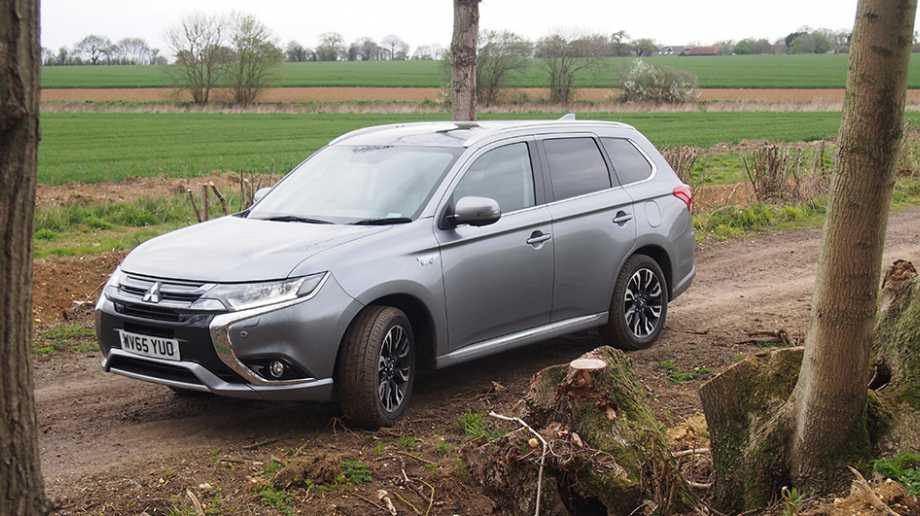PHEV Diary: Month five - Mitsubishi Outlander PHEV

The highest monhtly mileage tally, and the most efficient economy figure are two major highlights of the fifth month with our Mitsubishi Outlander PHEV. A security vulnerability is the only downside.
Going on the mileage figures alone, it’s been the busiest month yet for our Mitsubishi Outlander PHEV. Over 1,258 miles have passed under the big SUV’s wheels in month five, with, once again, a large proportion of them on the UK’s A-road and motorway network. A disproportionately large number of journeys larger than my regular trips to the office have necessitated three trips to filling stations to brim the Outlander’s tank with petrol. The cost? £116.36, around £3 more than last month.
All-embracing charging attitude
However, despite the trio of fill-ups, one figure which has unbelievably improved is our average, real-world economy figure. This month, for the first time, we’ve eclipsed Mitsubishi’s claimed economy figure of 156mpg. That’s right, in the real world, with careful use and adopting an all‑embracing charging attitude, we achieved 157.71mpg, beating the Japanese company’s official figure by a whopping 1.71mpg.
Part of the reason for the uplift in economy could be down to the fact that I’ve recently started to use the steering wheel‑mounted paddles in earnest. Whereas before I’d leave the car in ‘B5’ mode (the fiercest regenerative braking setting) and let it shake off speed when it needed to, the past few weeks have seen me choose ‘B3’ for most of the time I’m driving, changing ‘up’ when I approach a junction or obstacle which would require the Outlander to come to a stop. It clearly works, and is definitely a better and more enjoyable way to drive the plug-in SUV. You not only feel more involved in the driving process, but you have more fun trying to outwit the traffic and judge when to take your foot off the accelerator and let the car – hopefully – roll to a stop. I don’t think that’s all that had made a difference to this month’s impressive figures, though.
No obstacle
I have a feeling that the warmer weather has played more than its part, too. At least two journeys home from the office this month have been achieved in all-electric mode only. That’s never happened before. My shortest commute is around 25 miles, and with the full 32 miles of range displayed (another first since the car arrived), the distance proved no obstacle to the total zero-emissions journey, and I was rewarded with a ‘---.-’ figure in the miles per gallon display. I was also quietly proud of the 990.4mpg which appeared at the end of one particularly urban-flavoured trip. One interesting point: I have heard of other Outlander PHEV drivers whose cars have informed them of a 33‑mile range, which is actually higher than that of the 32 which Mitsubishi claims.
But with any highs, you have to accept the lows, too – if the Outlander PHEV doesn’t visit an electric car charging point often enough, it’s just a petrol-powered, quite heavy SUV with a mid-30s mpg drinking habit. The lowest figure this month? 30.5mpg – I wasn’t quite so pleased with that one...
Other stats? Average electricity consumption of 3.53 mile/kWh has been the highest since the test started back in February, while the 72 per cent of time I’ve spent this month ‘EV’ driving is the second-highest figure since WV65 YUO was delivered.
Security flaw
The news broke this month that the Outlander PHEV has a serious security flaw and is vulnerable to hacking through its Wi-Fi system as discovered by independent specialists. Available to smartphone users as a Wi-Fi network, a hacked system allows the control of various functions which are accessed through the smartphone app available to owners of the car. More worryingly, though, the alarm can be disabled allowing for easy theft of the car, and individual Outlander PHEVs can be located. The battery can also be drained of charge and charging settings themselves can be adjusted.
As initially recommended, I immediately de-registered WV65 YUO’s VIN number from my app – accessed through the app’s ‘Cancel VIN Registration’ feature – but this only ‘fixes’ the problem in the short-term. A longer term solution is to re-engineer the Wi-Fi’s AP client connection, and Mitsubishi acted quickly and is working with all the concerned parties to resolve the issue as fast as it can. The company is keen to point out that the app is limited in its functions and that ‘without the remote control device, the car cannot be started and driven away.’
If you’re an Outlander PHEV owner or driver I’d like to hear from you, so please do get in touch. Email richard.gooding@psigroupltd.co.uk or ping me a message on Twitter at @richgoodingcom.









